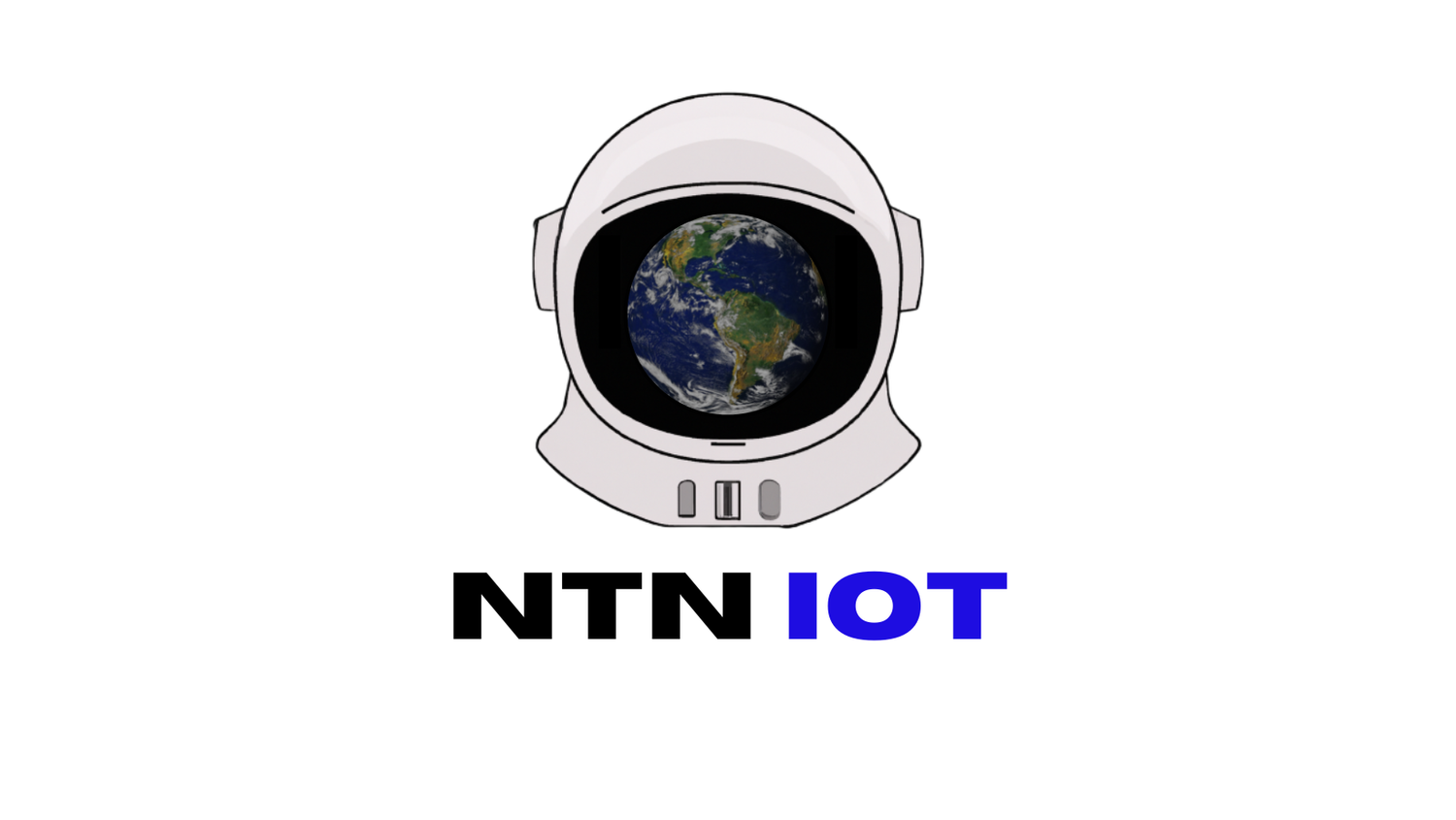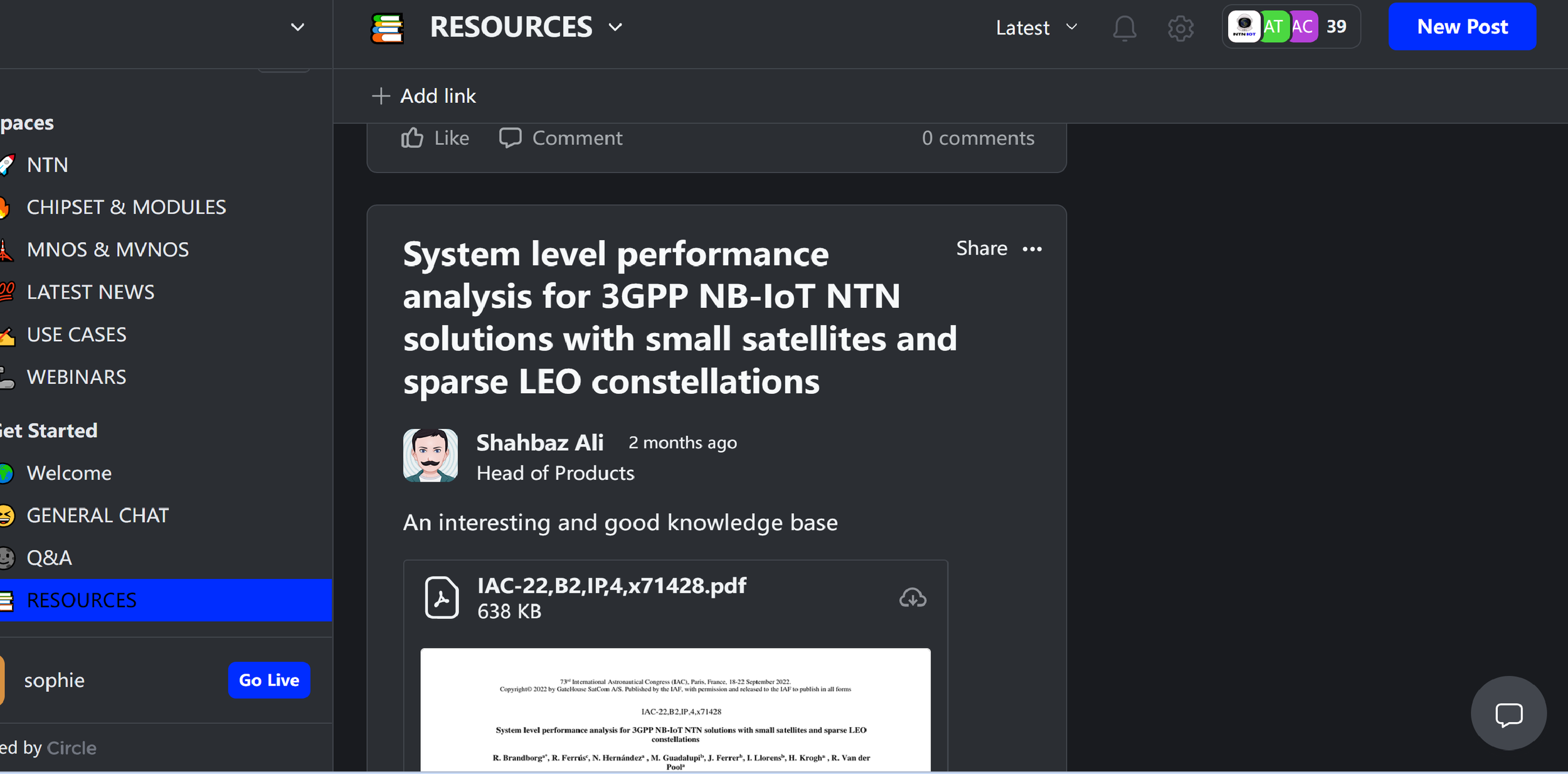Resources | System Level Performance Analysis for 3GPP NB-IoT NTN Solutions with Small Satellites and Sparce LEO
73 rd International Astronautical Congress (IAC), Paris, France, 18-22 September 2022.
Copyright© 2022 by GateHouse SatCom A/S. Published by the IAF, with permission and released to the IAF to publish in all forms
IAC-22,B2,IP,4,x71428 Page 1 of 13 IAC-22,B2,IP,4,x71428
System level performance analysis for 3GPP NB-IoT NTN solutions with small satellites and sparse LEO constellations
(a)R. Brandborg* , (c)R. Ferrúsc , (a)N. Hernández , (b)M. Guadalupi , (b)J. Ferrer , (b)I. Llorens , (a)H. Krogh , (a)R. Van der Pool
a a GateHouse SatCom, Denmark, {rbs, nhm, hkm, rvp}@gatehouse.com
b Satelio IOT services, Spain, {marco.guadalupi, josep.ferrer, isaac.llorens}@sateliot.space
c Universitat Politéchnica de Catalunya (UPC), Spain, ramon.ferrus@upc.edu
* Corresponding Author
Complementing and extending the coverage reach of terrestrial networks with satellite access is one of the new connectivity frontiers being addressed on the path to beyond 5G/6G systems. In particular, the realization of almost ubiquitous connectivity in a seamless and cost-affordable manner for low-complexity, power-constrained devices is key to unleashing the potential of the massive IoT market, where the lack of global coverage and international roaming are currently standing as main limiting factors for market growth. To harness this potential, the 3rd Generation Partnership Project (3GPP), the standard development organization in charge of the mobile system specifications, is finalizing a first adaptation of the Narrowband Internet of Things (NB-IoT) protocol for nonterrestrial networks (NB-IoT NTN) as part of Release 17 specifications. This paves the way for integrated terrestrialto-satellite connectivity solutions that could leverage and help further boost the large and growing 3GPP device and IoT application ecosystem. The NB-IoT NTN protocol is being designed to support different types of satellite deployments, including Geostationary Orbit (GEO), Medium Earth Orbit (MEO) and Low Earth Orbit (LEO) constellations, single-beam and multi-beam satellite platforms, and Earth-moving and Earth-fixed satellite cells. In this context, this paper presents a system level performance analysis of a NB-IoT NTN deployment solution using nanosatellite in sparse LEO constellations, which is one of the most challenging scenarios in terms of achievable coverage footprint and satellite capacity due to the power and size constraints in the satellite platform. A framework for modelling such scenarios is described in the paper and estimations of system performance indicators such as number of connections that can be handled simultaneously, effective satellite footprint coverage area and supported device density (UEs/km2 ) are provided for different representative operational configurations (e.g. multi-carrier configurations with anchor and non-anchor carriers) and traffic characteristics (e.g. application payload sizes). Our results demonstrate the technical feasibility of such a system and illustrate some of the relevant trade-offs between the system configurations and communication performance.
Keywords: 5G NB-IoT NTN, CubeSats, system level performance, connection rate
Acronyms/Abbreviations
5G New Radio (5G NR), Block Error Rate (BLER), Cell Area (CA), Connection Density (CD), Connection Rate (CR), Core and Terminals (CT, Downlink (DL), enhanced LTE eNB (ng-eNB), Geostationary Orbit (GEO), Key Performance Indicator (KPI), Long Term Evolution (LTE), Low Earth Orbit (LEO), Massive machine type communications (mMTC), Master Information Block (MIB), Medium Earth Orbit (MEO), Narrowband Internet of Things (NB-IoT), NonTerrestrial Network (NTN), Orbit Parameter Message (OPM), QoS (Quality of Service), Radio Access Network (RAN), Random Access Channel (RACH), Service Architectures (SA), Solar Synchronous Orbits (SSO), System Information Block (SIB), Technical Specification Group (TSG), Terrestrial Network (TN), Time on Air (ToA), Uplink (UL), User Equipment (UE), Quality of Service (QoS)
1. Introduction
The IoT market has been accelerating in recent years, however the case of ubiquitous coverage has yet to be fully addressed. There has been an effort in 3GPP to standardize cellular NTN based on the well-known terrestrial cellular technologies: NR, eMTC and NBIoT. Among them, NB-IoT is of special interest due to…Join or Login to the community to read the full article.


